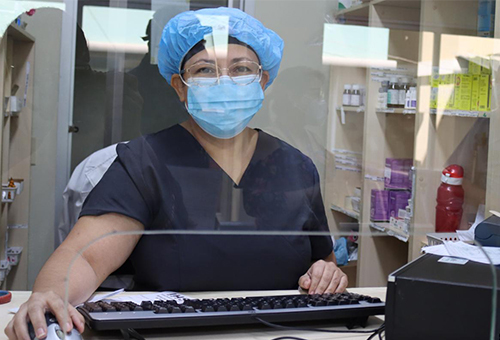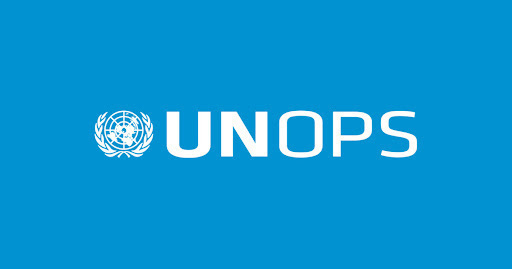The United Nations Office for Project Services (UNOPS)

Diseases without borders
Infectious diseases don’t respect national borders. To eradicate them, we shouldn’t either – here’s why.
Over the last 10 years, the number of malaria cases has decreased dramatically in Southeast Asia. So why is malaria still a risk?
Because there is a new threat emerging from countries in the Greater Mekong Subregion: Partial resistance to artemisinin (a critical ingredient for treating falciparum malaria, the deadliest form of the disease) and resistance to its partner drugs used in artemisinin-based combination therapies is increasing.
According to the World Health Organization, there were more than 200 million cases of malaria in 87 countries in 2017 – with more than 400,000 people dying of a preventable and curable disease.
The north-eastern region of Cambodia – along the forested borders of Lao, Thailand and Vietnam – is most at risk. Cases of malaria have been bucking trends and increasing. Forest goers and mobile migrant populations are the most vulnerable to contracting the disease and contributing to its further spread across borders.
The consequences of artemisinin and its partner drugs losing their effectiveness in these areas – and, more widely, with no new antimalarial drug in the pipeline – is unthinkable. Eliminating malaria is the only option to avoid a catastrophe.
So how do you eliminate a cross-border disease like malaria? It requires a combination of efforts: Early diagnosis, treating every case when and where they’re found, and tracking the spread of the disease itself.
Since 2014, UNOPS – along with the National Malaria Control Programme, the World Health Organization and civil society organizations – has managed the implementation of The Global Fund to Fight AIDS, Tuberculosis and Malaria’s Regional Artemisinin-resistance Initiative (RAI). Now in its second phase, RAI2-Elimination (RAI2E) is focused on containing the spread of resistance and eliminating falciparum malaria by the end of 2030.
Regional surveillance, monitoring and collaboration is key to meeting this goal – all of which require data from hard-to-reach areas and from across borders, in order to prepare adequate responses.

Stamping out malaria for good
The regional Malaria Elimination Database helps track malaria in the Greater Mekong Subregion – and accelerate elimination efforts. The centralized, secure database includes data on all malaria cases from all areas in the region, including mobile migrant populations. National programmes can connect the information to factors linked to malaria transmission, such as drug resistance, and entomological and ecological patterns.
Malaria Elimination Database
- The regional Malaria Elimination Database was developed in partnership with The Global Fund, the World Health Organization, the University of Oslo and national malaria control programmes.
Nearly 33,000 trained integrated community malaria workers participate in active and passive case finding and treatment among forest goers, in hard-to-reach areas and among mobile migrant workers in forested areas.
Health workers are equipped with smartphones and trained to report their activities on a weekly basis by text message. In the villages without mobile phone networks, runners (or messengers) between villages help ensure information on malaria cases and their treatment is regularly updated in the database.
The dense network of malaria posts, with non-stop coverage of targeted areas and near real-time reporting, ensures the early detection of malaria outbreaks. This enables the health departments of national governments, civil society organizations and United Nations organizations working on malaria elimination efforts to deliver supplies when and where needed.
This also helps organizations on the ground focus their resources on finding and treating people in these areas – before mosquitoes can transmit the disease any further.
For example, in Myanmar, four townships in Karen State – Hpapun, Myawaddy, Kawkareik and Hlaingbwe – are some of the most underserved and hardest to reach in terms of health services.
These townships also border Thailand. The 1,200 villages – with some 385,000 people – experience a lot of internal migration (to logging, mining and agriculture sites within Myanmar) and external migration (to and from Thailand). With no access to formal health care delivery system, malaria cases were high – and were previously the source of malaria crossing to border settlements in Thailand.
After four years of malaria elimination activities targeting this area, the disease has decreased in villages across the townships – falciparum malaria has almost vanished. And in Thailand, the National Malaria Control Programme has noted a dramatic decrease in the number of malaria cases for migrants crossing the border, with less than 4,500 cases reported in 2018 – a decline of more than 45% compared to 2017.
By tracking malaria infection across borders and in the remote areas – and by tracking, tracing and treating every case – malaria will be a disease of the past. This goal is within reach – it’s no longer a dream, but a tangible reality.
Dr. Attila Molnar
Dr. Attila Molnar is a specialist of family medicine, a public health physician and a health economist with 25 years of experience in health services, public health, health systems, health financing, management and global health. UNOPS is the Regional Principal Recipient for The Global Fund to Fight AIDS, Tuberculosis and Malaria’s RAI2E grant, of which Attila serves as the Programme Director.













